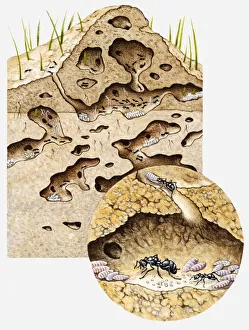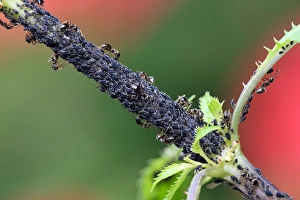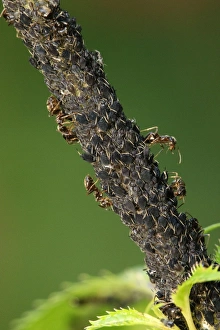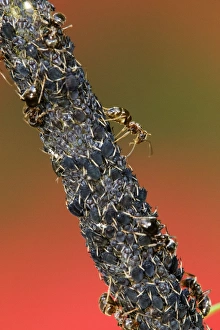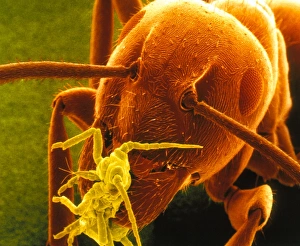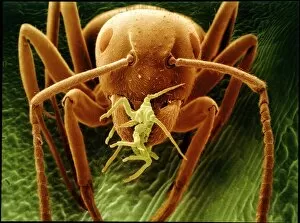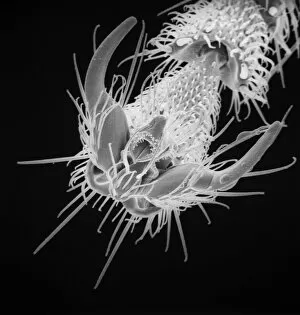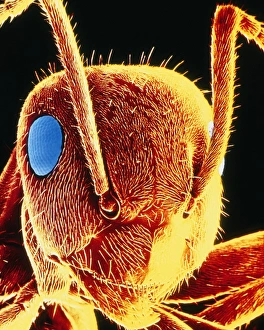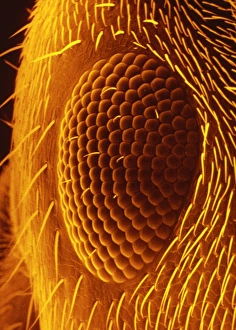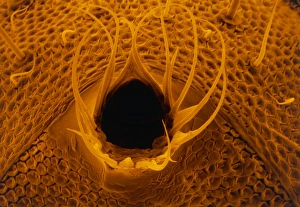Lasius Niger Collection
Lasius niger, commonly known as the Black garden ant, is a fascinating species of ant that exhibits remarkable characteristics
All Professionally Made to Order for Quick Shipping
Lasius niger, commonly known as the Black garden ant, is a fascinating species of ant that exhibits remarkable characteristics. With its compound eyes, such as those seen in SEM C018 / 0552, this tiny creature has exceptional visual capabilities. But it's not just their eyes that make them intriguing; their intricate tunnel system inside the nest is equally impressive. A cross-section illustration reveals the complexity and organization within their underground abode (Picture No. 10984680). The ants diligently construct these tunnels to ensure the survival and prosperity of their colony. In Picture No. 10984678, we witness Lasius niger's industrious nature as they tirelessly work together to build and maintain their nests. These images showcase how they create an interconnected network of chambers for various purposes like brood rearing or storing food (Picture No. 10984679). The resilience and adaptability are further highlighted in Picture No. 10982657 where we see them navigating through challenging terrains with ease using their strong mandibles (jaws) and can overcome obstacles efficiently while carrying out essential tasks for the colony. A colored SEM image captures a Garden ant carrying a Rose aphid (Picture No. 10982658), showcasing another intriguing aspect of Lasius niger's behavior - symbiotic relationships with other insects like aphids. These ants have developed a mutually beneficial partnership with aphids by protecting them from predators while benefiting from honeydew secreted by these small insects (Colored SEM of a Garden ant carrying a Rose aphid). This unique interaction showcases the complexity and interdependence found within ecosystems. Observing ants feeding in Picture No. 10982656 provides insight into Lasius niger's dietary preferences and feeding habits – an essential part of sustaining their colonies' energy needs.

